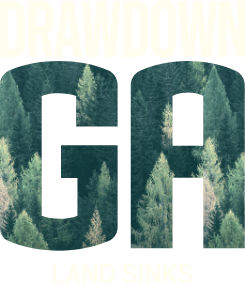Head over to the Carbon Reduction Visualizer to explore data on Georgia’s greenhouse gas emissions. You can see how emissions fall if we scale solutions to ambitious, but achievable, levels.
Land Sinks

Here’s the deal
Georgia’s natural land sinks -- including 22 million acres of working forests and rich coastal wetlands -- sequester up to 41 Mt of CO2 each year, offsetting about 26% of total emissions in the state. It’s critical to increase the capacity to sequester carbon as we reduce emissions elsewhere.


Planting
Trees
Plan...
Afforestation means creating forests in places that are no longer forested, such as planting trees on degraded agricultural or pasture lands and in urban areas. Silvopasture is the practice of adding trees to pastureland. Forests sequester carbon in trees, soil and other vegetation.
Wetlands
Protection
Wetl...
Georgia has about 100 miles of coast and coastal wetlands, most owned by federal, state and conservation agencies. We’re also home to the largest amount of tidal wetlands of any state in the U.S. Coastal wetlands, including seagrasses, tidal salt marshes, and freshwater marshes, are effective carbon sinks. These ecosystems sequester carbon in plants and in sediments.
Forest
Management
Fore...
Restoring and protecting temperate-climate forests has many benefits including carbon sequestration from trees, soil and other vegetation. Georgia has 22 million acres of working forests that offset about 26% of the state’s CO2 emissions.

Planting Trees
Afforestation means creating forests in places that are no longer forested, such as planting trees on degraded agricultural or pasture lands and in urban areas. Silvopasture is the practice of adding trees to pastureland. Forests sequester carbon in trees, soil and other vegetation.
Coastal Wetlands Restoration
Georgia has about 100 miles of coast and coastal wetlands, most owned by federal, state and conservation agencies. We’re also home to the largest amount of tidal wetlands of any state in the U.S. Coastal wetlands, including seagrasses, tidal salt marshes, and freshwater marshes, are effective carbon sinks. These ecosystems sequester carbon in plants and in sediments.
Temperate Forest Stewardship
Restoring and protecting temperate-climate forests has many benefits including carbon sequestration from trees, soil and other vegetation. Georgia has 22 million acres of working forests that offset about 8% of the state’s CO2 emissions.
Here’s where we are
Georgia’s forests are already a large-scale carbon sequestration ecosystem. In fact, according to the National Land Cover Database, more than half of our state’s land is forested. These ecosystems can sequester carbon in trees, soil, and other vegetation. We can increase forest coverage in several ways, including planting trees on degraded agricultural and pasture lands.

Here’s where we are
Frequently Asked Questions
Why focus on forests and farms?
Georgia has an abundance of forested and agricultural land. Both offer opportunities to reduce and sequester carbon. According to the Georgia Forestry Commission, the state has more than 24 million acres of forested land. And, farmland accounts for more than 10 million acres of land in the state, according to the USDA.
How do our temperate forests perform as carbon sinks?
Currently Georgia’s temperate forests store about 30 MtCO2e each year in trees & soils. This amount will increase over time as trees continue to grow.
Can you describe our coastal wetlands?
Georgia’s 100 miles of coastline are home to a wide variety of wetland ecosystems, including freshwater tidal and non-tidal wetlands as well as salt marshes, also known as estuarine wetlands. In total, estuarine tidal marshes make up approximately 368,000 acres of land along the Georgia coast.



